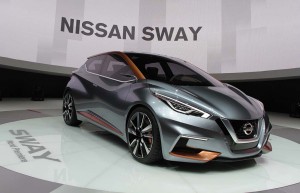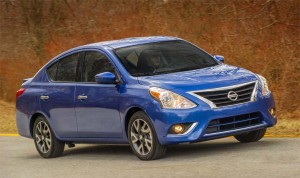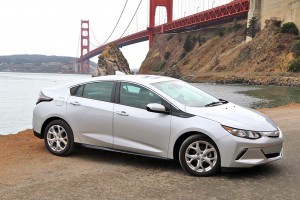Nissan is giving serious thought to bringing to market an extended-range electric vehicle, or E-REV. But despite widespread reports, the battery-based vehicle is not yet locked down for production.
Rumors began flying after an Australian publication interviewed Yoshi Shimoida, the deputy general manager of Nissan’s EV and HEV engineering unit. He told Motoring magazine the Japanese maker is working on “something like” the BMW i3 REx, an extended range version of the Bavarian maker’s electric city car.
Shimoida also stressed that this would be an entirely new model, and not a modified version of the Nissan Leaf – which is expected to offer a much longer-range battery when a second-generation model comes to market in the next couple years.
But while some media outlets have taken the executive’s comments to mean Nissan will be bringing a production E-REV to market next year, a senior executive with the company told TheDetroitBureau.com it is “not even in the production plans” for the company yet, and is likely a little further down the pike.
That said, “We’re no different from any other manufacturer,” said the executive. “Everybody’s looking at those things.”
With the auto industry facing increasingly stringent emissions and mileage standards, there’s a huge push to electrify, adding everything from so-called “mild” hybrids all the way up to pure battery-electric vehicles. The big push, Ford Motor Co. CEO Mark Fields told TheDetroitBureau.com last week, is for plug-in hybrids that can be driven in electric mode for running errands and short commutes, then switch to gas power for longer drives.
(Ford to invest $4.5 bil in new “electrified” vehicles by 2020. Click Here for the full story.)
But the term, “plug-in,” is sometimes confusing. There are two distinct variations:
- The first is the parallel hybrid, such as the Ford C-Max Energi and the BMW X5 xDrive40e. These vehicles can draw power from their electric motors, gas engines or both sources of energy;
- What Nissan is working on, said Shimoida, is a “series hybrid.” The wheels only draw power from electric motors. If the batteries run out of power, an electric motor fires up, but it only serves as a generator and doesn’t directly drive the wheels.
That’s why this concept is known as an extended-range electric vehicle, as it’s just a way to extend the benefits of driving on battery power. The BMW i3 is, in basic form, a BEV, but the REx version adds the gas-powered generator for those who need longer range. The best-known – and first mass-market – version of an E-REV was the Chevrolet Volt.
Chevy cheats a bit; the gas engine can provide a little extra direct torque under hard acceleration, but if the electric motors aren’t running the car cannot move.
Whether in parallel or series form, what has come to be known, generically, as a plug-in hybrid offers a number of potential benefits. It can be run primarily in zero-emissions mode, the gas engine firing up only when the batteries run down. It allows a vehicle to use less batteries than a pure battery-electric vehicle, saving some weight and reducing cost a bit. But the design is more complex, and still more expensive, than a conventional gas vehicle.
(Chevrolet Volt named Green Car of the Year. Click Here for the story.)
Nonetheless, in one form or another, there’s expected to be a huge surge of plug-in models, Mercedes-Benz alone planning to launch 10 new ones by 2018.
As to what model Nissan might use if it does bring an E-REV to market, speculation centers around several alternatives, including both the current Versa, or perhaps the Sway concept first shown last March at the Geneva Motor Show. Sway is a European-sized hatchback whose design language is expected to strongly influence the next-generation Nissan Micra.
Those downsized vehicles would have appeal in the European market where plug-ins are expected to see significant growth in the near future. But Nissan might opt for something a bit larger to win buyers in the U.S. market.
We could hear more about Nissan E-REV plans by late next year, though a production version still needs to get formal approval, meaning it’s likely several years away, at the earliest.
Meanwhile, expect to hear about the Gen-2 Nissan Leaf in 2016. The maker just added an optional 30 kilowatt-hour battery boosting range to 107 miles. But several senior officials, notably including global design director Shiro Nakamura, have indicated the next Nissan Leaf will likely push up into the 200-mile range, in line with the Chevrolet Bolt battery-electric vehicle coming to market late next year.
(Click Here to check out Porsche’s new Mission E battery sports car.)



